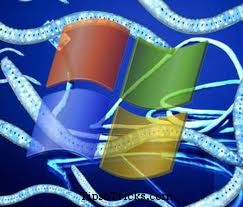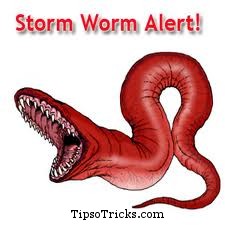Internet
Top 5 Deadliest Viruses of Last Five Years
Viruses are well-abused by everyone who uses a computer. Viruses are nothing but a small piece of code or tiny programs that is designed to create panic in a system. Yes, the intention behind creating a virus is to effect the normal smooth running of a system. Some viruses takes CPU consumption and to put load on system. Some are designed to add themselves to files, directories and drives. Some just duplicate themselves for no reason.
But still viruses have created a huge buzz in computing world since day one, costing huge amount of money and data loss for enterprises that is still uncountable.
Keeping this in mind, I decided to share some knowledge of those Top 5 Deadliest Viruses that seriously created huge mess over internet in last 5 years or so.
Hope you’ll find it informative and get to learn something out of it.
Top 5 Deadliest Viruses
1. Alureon (Year 2010)

Let’s start with the “Virus of 2010” named as “Alureon” , This cunning Trojan and toolkit was designed to capture usernames, passwords and credit card data by intercepting data traffic over any network. This virus also affected Microsoft Windows through BSoD (Blue Screen of Death). Systems are usually infected through any software download or visiting any posting related site.
2. Daprosy Worm (Year 2009)
This worm was discovered in 2009 and was named “Daprosy Worm” by Symantec. It is a malicious program that spreads through LAN connections, spammed e-mails and USB mass storage devices. Infection comes from a single read1st.exe file where numerous clones are created at once bearing the names of compromised folders. The most obvious symptom of Daprosy infection is the presence of Classified.exe or Do not open – secrets!.exe in the folders.
The deadly worm is renowned to deteriorate, corrupt and even freeze the operating system due to programming bugs.
3. Conficker (Year 2008)
Also Known as:Downup, Downadup, Kido
Well here is another worm who loves to chew Microsoft Windows. The “Conficker” was designed to attack Windows and was discovered in 2008 caused Microsoft a real grumble. This worm attacked in 2 steps first, worm attacks the Microsoft vulnerability MS08-067 in Server Service which allows remote code execution. This vulnerability allows a remote attacker to run arbitrary code on the machine without authentication and take full control of the computer. Second, Conficker Worm uses the infected machine computing power to execute password brute force attacks to crack administrator passwords in the local network. This will allow the worm to spread through network shares as well.
You can visualize it’s appetite by the fact that in 2008 this virus affected over seven million government, business and home computers in over 200 countries causing a damage of over 9.1 billion, mostly in Asia, South America and Europe. After eating this much this worm should have turned into Anaconda.
Wait, if you are thinking that this was the end of the Conficker story think again, as this anaconda has unleashed some eggs as well. The upgraded version of this virus provided more threat to Window users as now it can:
-Blocks DNS lookups.
-Disables Auto Update.
-Kills anti-malware.
-Scans for and terminates processes with names of anti-malware, patch or diagnostic utilities at one-second intervals.
4. Storm Worm (Year 2007)
Also Known as: Small.dam, Trojan.Peacomm, Trojan.Peed, Trojan.Tibs, W32/Zhelatin

The worm who attacked through the news of a storm, that` right!, The king of viruses in 2007 known as “Storm Worm” attached itself in e-mail having title “230 dead as storm batters Europe” and infected every one who opened the mail and after infecting this virus created million of spam’s to be launched through the infected computers.
Apart from this feature it was also very helpful for hackers in identity theft & bank fraud. As per FBI America many cyber crimes were reported due to this particular virus.
5. Nyxem (Year 2006)
Also Known as: Mywife, Hunchi, I-Worm.Nyxem, Blackmal, Blueworm, Blackworm

Nyxem worm was seen in March, 2006. The worm spreads in e-mails using an external SMTP engine. It sends itself with different subjects, body text and attachment names. The worm also copies itself multiple times to an infected hard drive. The most dangerous part of this worm was that it deletes your antivirus programs, if they are installed in the same directories as the ones specified in the worm’s code. It can also delete the entries in the Windows Registry belonging to these antivirus programs, so these applications will not be run automatically the next time windows is started. The worm also contains one GIF file which is used to make a recipient of infected e-mails think that the message was scanned by Norton Anti-Virus and no infection was found.














